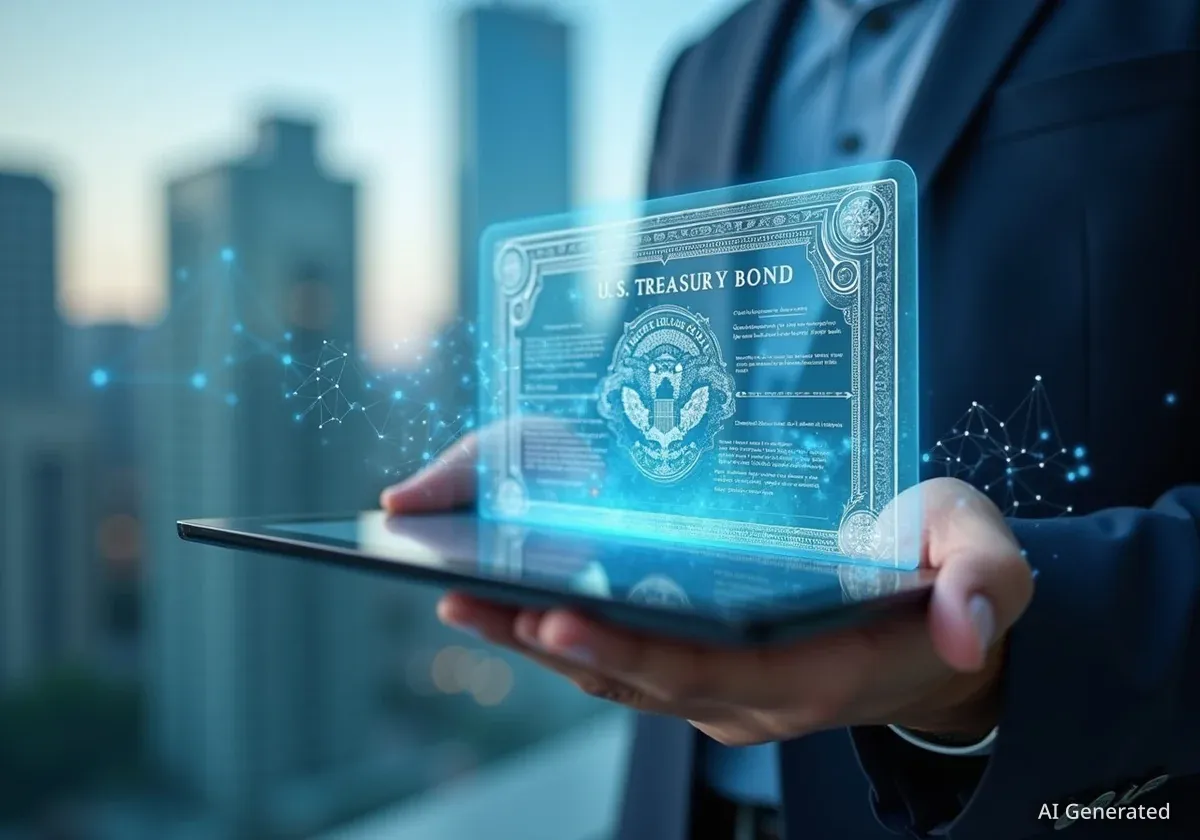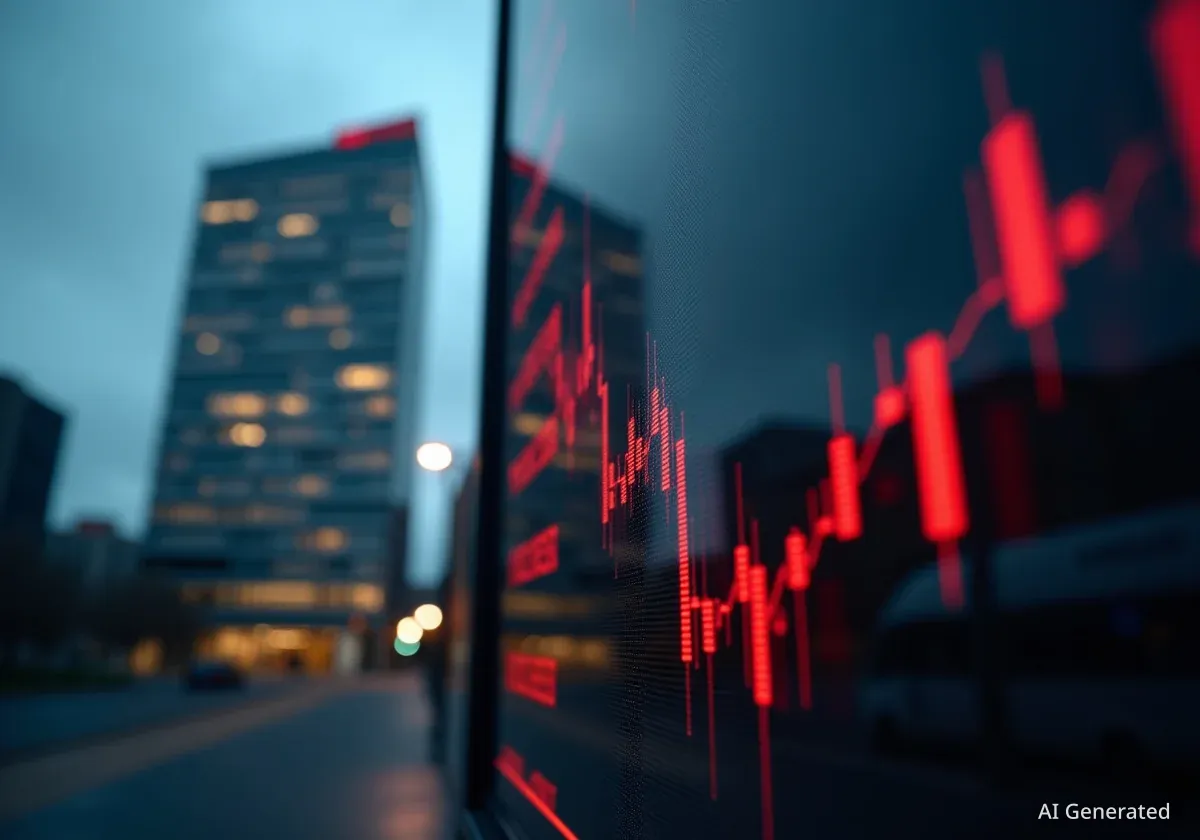The long-discussed concept of representing physical and traditional financial assets as digital tokens on a blockchain is transitioning from theory to practice. In 2025, a growing number of real-world assets (RWAs), from U.S. Treasury bills to shares in private funds, are being converted into digital tokens, a process that promises to reshape investment markets.
This shift, known as tokenization, aims to make markets more efficient, transparent, and accessible to a broader range of investors. By replacing traditional ledgers and paper-based ownership records with blockchain technology, the process can significantly reduce settlement times and administrative costs.
Key Takeaways
- Asset Tokenization Explained: The process involves converting ownership rights of real-world assets, such as real estate or government bonds, into digital tokens on a blockchain.
- Market Growth: The tokenized asset market is expanding, with major financial institutions exploring the technology for U.S. Treasurys, private equity, and money market funds.
- Primary Benefits: Key advantages include increased liquidity for traditionally illiquid assets, faster transaction settlements (from days to minutes), and lower administrative costs.
- Investor Accessibility: Tokenization can lower investment barriers by enabling fractional ownership, allowing smaller investors to access assets previously available only to large institutions.
Understanding the Mechanics of Tokenization
Tokenization is the process of creating a digital representation of a real-world asset on a blockchain. This digital token serves as a secure, verifiable proof of ownership. Instead of relying on complex, often slow, traditional systems involving intermediaries like transfer agents and clearinghouses, ownership is recorded and transferred directly on the blockchain.
Think of it as creating a digital deed or share certificate. For example, ownership of a commercial building could be divided into one million digital tokens. Each token would represent a one-millionth share of the property. These tokens can then be bought, sold, or traded among approved investors on a secure digital platform.
From Paper to Pixels: A System Overhaul
Traditional asset management relies on a complex web of intermediaries and processes that can take days to complete. A stock trade, for instance, typically settles in a T+1 or T+2 timeframe (trade date plus one or two business days). Tokenization aims to enable near-instantaneous settlement, as the transfer of the token and the finalization of the transaction occur simultaneously on the blockchain.
This method applies to a wide range of assets. Financial instruments like U.S. Treasury bills, corporate bonds, and shares in private equity funds are prime candidates. Physical assets such as real estate, fine art, and even commodities are also being explored for tokenization.
The Key Advantages Driving Adoption
The growing interest in RWA tokenization is fueled by several potential benefits that could fundamentally improve financial markets. These advantages appeal to both asset managers and individual investors.
Enhanced Liquidity
One of the most significant benefits is the ability to bring liquidity to traditionally illiquid assets. Markets for things like private equity, venture capital, and commercial real estate are often restricted, with high minimum investments and long lock-up periods.
By converting these assets into tradable tokens, a secondary market can be created. This allows investors to buy and sell their shares more easily, rather than being locked in for years. According to a report from Boston Consulting Group, the tokenized asset market could reach $16 trillion by 2030, largely driven by this quest for liquidity.
Fractional Ownership and Accessibility
Tokenization makes it possible to divide high-value assets into smaller, more affordable pieces. This concept, known as fractional ownership, dramatically lowers the barrier to entry for many types of investments.
- An investor could buy a small fraction of a multi-million dollar commercial property.
- A portion of a rare piece of art could be purchased as an investment.
- Access to exclusive private equity funds could be opened to a wider pool of accredited investors.
This democratization of investment opportunities is a core promise of the technology, potentially allowing more people to build wealth through asset classes that were previously out of reach.
Efficiency by the Numbers
Financial industry analysis suggests that tokenization could reduce the administrative costs associated with managing certain assets by 30% to 50%. This is achieved by automating processes like compliance checks, dividend distributions, and ownership record-keeping through smart contracts on the blockchain.
Increased Efficiency and Transparency
Blockchain technology provides an immutable and transparent ledger of all transactions. Every transfer of ownership is recorded permanently and can be verified by authorized participants in the network. This reduces the potential for fraud and disputes over ownership.
Furthermore, smart contracts—self-executing contracts with the terms of the agreement directly written into code—can automate many of the manual processes involved in asset management. This includes dividend payments, interest calculations, and compliance enforcement, leading to significant cost and time savings.
Current Trends and Real-World Examples
While still in its early stages, the tokenization of real-world assets is no longer just a theoretical concept. Major financial players are actively launching pilot programs and products.
"We are witnessing a foundational shift in financial market infrastructure. The ability to tokenize and trade real-world assets on-chain is not an incremental improvement; it's a step-change in how value is managed and transferred," states a recent analysis from a leading digital asset research firm.
In 2025, several key areas are seeing significant activity:
- Tokenized U.S. Treasury Bills: Firms like Franklin Templeton have launched tokenized money market funds on public blockchains, allowing investors to hold digital tokens representing shares in a fund that invests primarily in U.S. government securities. This provides blockchain-native yield from a low-risk, traditional financial asset.
- Private Equity and Credit: Major private equity firms are exploring tokenized feeder funds. This allows them to offer access to their investment vehicles to a broader base of accredited investors through smaller investment sizes, streamlining the traditionally cumbersome onboarding and subscription process.
- Real Estate: Numerous platforms have emerged that allow for the fractional ownership of commercial and residential properties. Investors can buy tokens representing a share of a specific property and receive a portion of the rental income, all managed through a digital platform.
Challenges and the Road Ahead
Despite the significant potential, the widespread adoption of RWA tokenization faces several hurdles that need to be addressed.
Regulatory Uncertainty
The primary challenge is the lack of clear and consistent regulation. Securities laws in most countries were written long before the invention of blockchain technology. Regulators are still working to determine how digital tokens representing real-world assets should be classified and governed. Issues surrounding investor protection, anti-money laundering (AML) protocols, and cross-border transactions remain complex.
Technological and Security Concerns
While blockchain technology is inherently secure, the platforms and smart contracts built on top of it can have vulnerabilities. Ensuring the security of digital wallets, the integrity of smart contract code, and the operational resilience of trading platforms is crucial for building trust among institutional and retail investors.
Interoperability between different blockchains is another technical challenge. For the market to be truly efficient, tokens on one blockchain need to be easily transferable or recognized on another, a problem the industry is actively working to solve.
As the technology matures and regulatory frameworks become clearer, the tokenization of real-world assets is poised to continue its growth. The trend represents a significant convergence of traditional finance and blockchain technology, with the potential to create more efficient, accessible, and transparent global markets.





